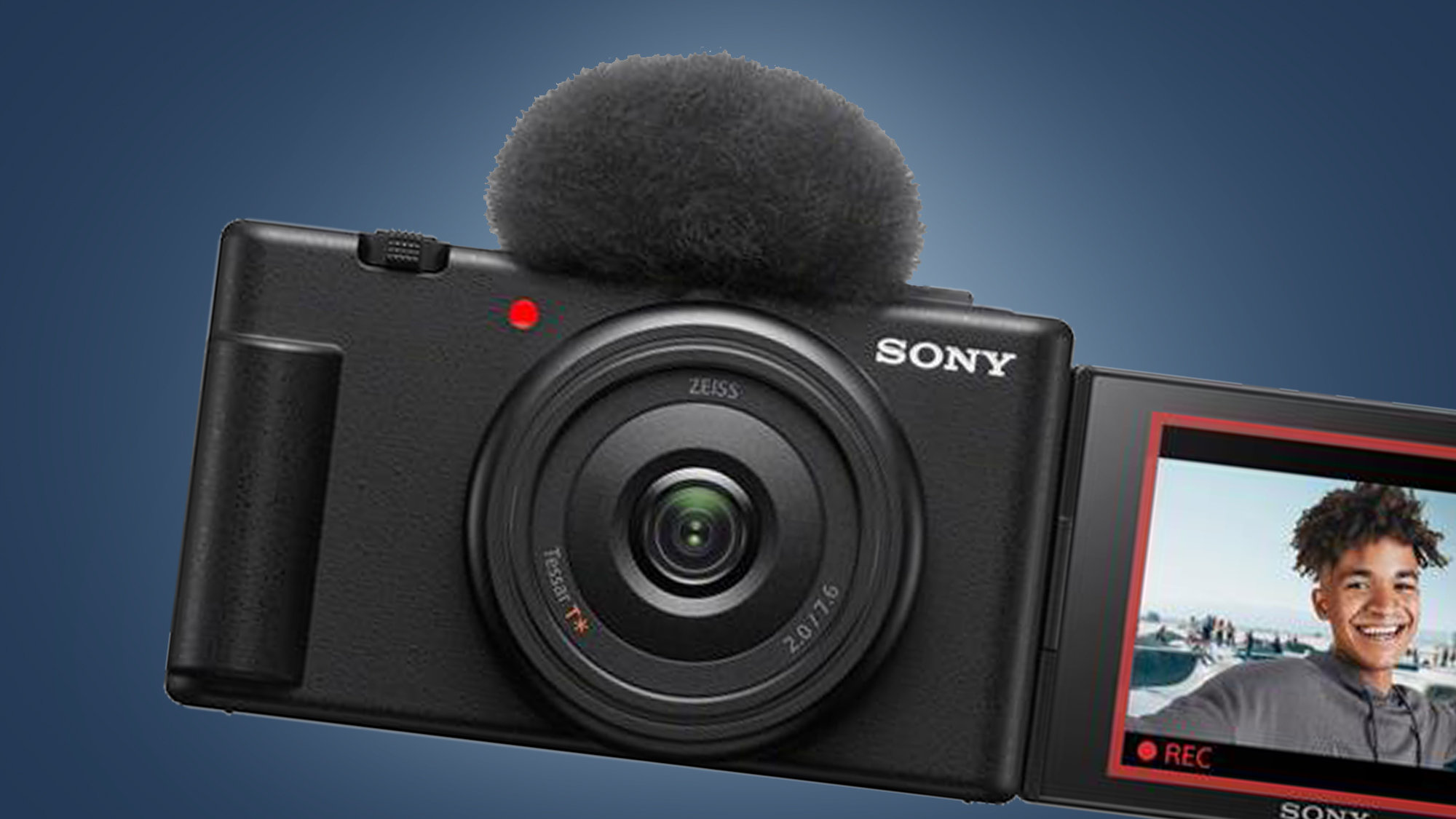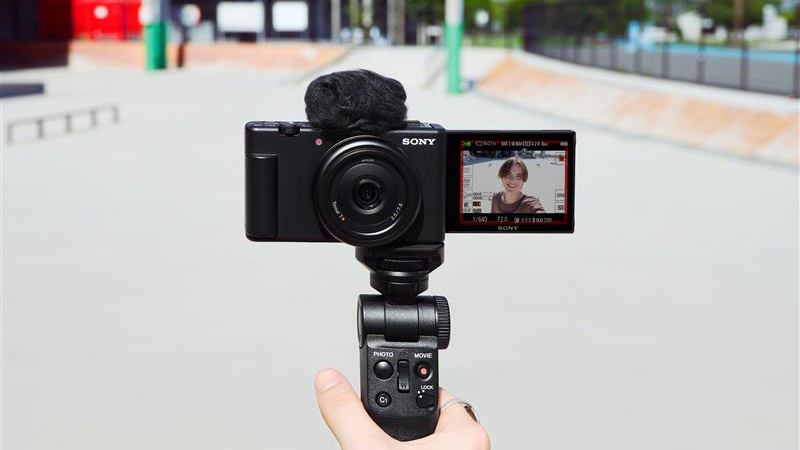The Sony ZV-1F is a strange twist on the world’s best vlogging camera
Two steps forward, one step back?

Sony's ZV-1 launched back in May 2020 and we still think it's the best vlogging camera of its kind. But now Sony has made your decision a little trickier by launching a more affordable version with a slightly mixed bag of features.
The Sony ZV-1F is in some ways a step up from the original Sony ZV-1 (which will remain on sale), and in others a regression. Its fundamentals are the same; it's a 20MP 1-inch compact camera that can shoot 4K/30p video with the kind of natural bokeh, or background blur, that smartphones still struggle to produce.
The ZV-1F's two main differences from the ZV-1 are its lens and user interface. One of our few complaints about its predecessor is that its 24-70mm f/1.8-2.8 lens can sometimes be a little tight if you're vlogging handheld, rather than on a tripod. The ZV-1F attempts to solve this by instead offering a wider 20mm f/2 lens.
It's a shame that lens isn't quite as bright at the ZV-1's, and photographers will miss the flexibility of having zoom. But in theory, the ZV1-F should still offer the shallow depth-of-field that smartphones like the iPhone 14 Pro and Google Pixel 7 are trying (and often failing) to simulate with their 'cinematic' modes.
Sony also says that the ZV-1F includes some new, smartphone-style touchscreen tricks. Unlike the ZV-1, which only let you tap the screen to pull focus, Sony's new vlogging camera lets you swipe up from the bottom of the screen to use frequently-used settings, or tap the screen's control icons to change things like aperture.
But the ZV-1F also has some odd limitations. The most baffling is that its autofocus system, which is probably the ZV-1's standout feature, uses an older contrast-detection system, rather a hybrid setup than includes both contrast- and phase-detect technology for reliable tracking.
Sony told us that this shouldn't make a lot of difference in most vlogging situations, and the new model does have a higher number of focus points than the ZV-1 (425, compared to 315). But this is something we'll have to test and it does put the ZV-1F more in line with older rivals like the Canon PowerShot G7 X Mark III, which also only uses contrast-only autofocus.
Get daily insight, inspiration and deals in your inbox
Sign up for breaking news, reviews, opinion, top tech deals, and more.
The other physical differences from the ZV-1 are that the ZV-1F thankfully now includes USB-C charging, rather than microUSB, but also replaces the ZV-1's hotshoe (which charges accessories like a shotgun mic while you use them) with a simpler coldshoe.
Otherwise, the ZV-1F is much the same as the ZV-1, with a 3-capsule microphone (with a bundled windscreen accessory), electronic stabilization, and the handy 'Product Showcase' mode which makes the autofocus setup ideal for YouTubers who do product reviews. The other final change is the pricing: the Sony ZV-1F will be available to buy from mid-October for $499 / £549 / AUS$849.
Analysis: Flying too close to smartphones?

In the two years since the original Sony ZV-1 launched, smartphones have made typically aggressive strides in video shooting performance – most notably in modes like Apple's 'Cinematic mode' (recently aped by the Google Pixel 7 series), which can apply a simulated background blur to their videos in an attempt to replicate a bright prime lens.
In fact, Sony itself has seemingly made a ZV-1 killer in the form of the Sony Xperia Pro-I, which also has a 1-inch sensor and has a 'Video Pro' interface that looks very similar to Sony's high-end mirrorless cameras. So is there now any real point to cameras like the new ZV-1F?
The margins are now certainly getting fine and a lot depends on your preferred type of smartphone. A compact camera like the ZV-1F, for example, gives offers high-quality video capture in a pocketable form factor for those who have mid-range smartphones or don't want an Xperia phone. The Xperia Pro-1 also does only use a portion of its 1-inch sensor, so a ZV-1F does still (on paper) have greater light-gathering powers.
But the ZV-1F also shows that Sony isn't quite as committed to the entry-level sector of its video cameras as it is with pro models like the Sony A7S III. The Sony ZV series, which also includes the Sony ZV-E10, is assembled from the parts left behind by some of the company's older stills-focused cameras. The ZV-1 and ZV-1F, for example, come from the same gene pool as Sony's RX100 series compacts.
It's a shame the ZV-1F's autofocus has seemingly regressed with its contrast-only system and we'd like to see even more smartphone-style user interfaces. But the ZV-1F could, on paper, still fight its way into our guide to the best vlogging cameras thanks to its new prime lens and relatively affordable price tag.

Mark is TechRadar's Senior news editor. Having worked in tech journalism for a ludicrous 17 years, Mark is now attempting to break the world record for the number of camera bags hoarded by one person. He was previously Cameras Editor at both TechRadar and Trusted Reviews, Acting editor on Stuff.tv, as well as Features editor and Reviews editor on Stuff magazine. As a freelancer, he's contributed to titles including The Sunday Times, FourFourTwo and Arena. And in a former life, he also won The Daily Telegraph's Young Sportswriter of the Year. But that was before he discovered the strange joys of getting up at 4am for a photo shoot in London's Square Mile.